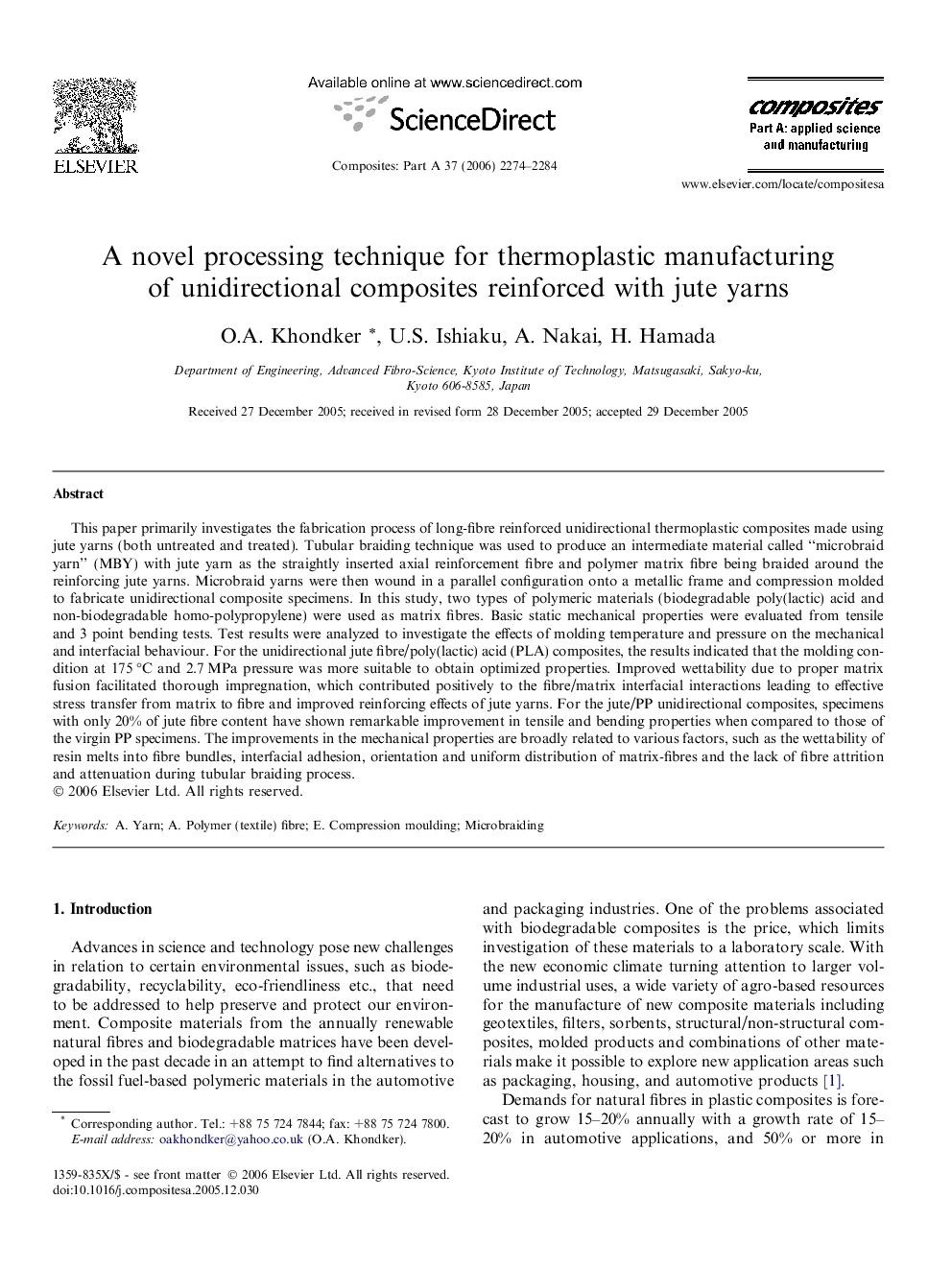| کد مقاله | کد نشریه | سال انتشار | مقاله انگلیسی | نسخه تمام متن |
|---|---|---|---|---|
| 1468190 | 990147 | 2006 | 11 صفحه PDF | دانلود رایگان |

This paper primarily investigates the fabrication process of long-fibre reinforced unidirectional thermoplastic composites made using jute yarns (both untreated and treated). Tubular braiding technique was used to produce an intermediate material called “microbraid yarn” (MBY) with jute yarn as the straightly inserted axial reinforcement fibre and polymer matrix fibre being braided around the reinforcing jute yarns. Microbraid yarns were then wound in a parallel configuration onto a metallic frame and compression molded to fabricate unidirectional composite specimens. In this study, two types of polymeric materials (biodegradable poly(lactic) acid and non-biodegradable homo-polypropylene) were used as matrix fibres. Basic static mechanical properties were evaluated from tensile and 3 point bending tests. Test results were analyzed to investigate the effects of molding temperature and pressure on the mechanical and interfacial behaviour. For the unidirectional jute fibre/poly(lactic) acid (PLA) composites, the results indicated that the molding condition at 175 °C and 2.7 MPa pressure was more suitable to obtain optimized properties. Improved wettability due to proper matrix fusion facilitated thorough impregnation, which contributed positively to the fibre/matrix interfacial interactions leading to effective stress transfer from matrix to fibre and improved reinforcing effects of jute yarns. For the jute/PP unidirectional composites, specimens with only 20% of jute fibre content have shown remarkable improvement in tensile and bending properties when compared to those of the virgin PP specimens. The improvements in the mechanical properties are broadly related to various factors, such as the wettability of resin melts into fibre bundles, interfacial adhesion, orientation and uniform distribution of matrix-fibres and the lack of fibre attrition and attenuation during tubular braiding process.
Journal: Composites Part A: Applied Science and Manufacturing - Volume 37, Issue 12, December 2006, Pages 2274–2284